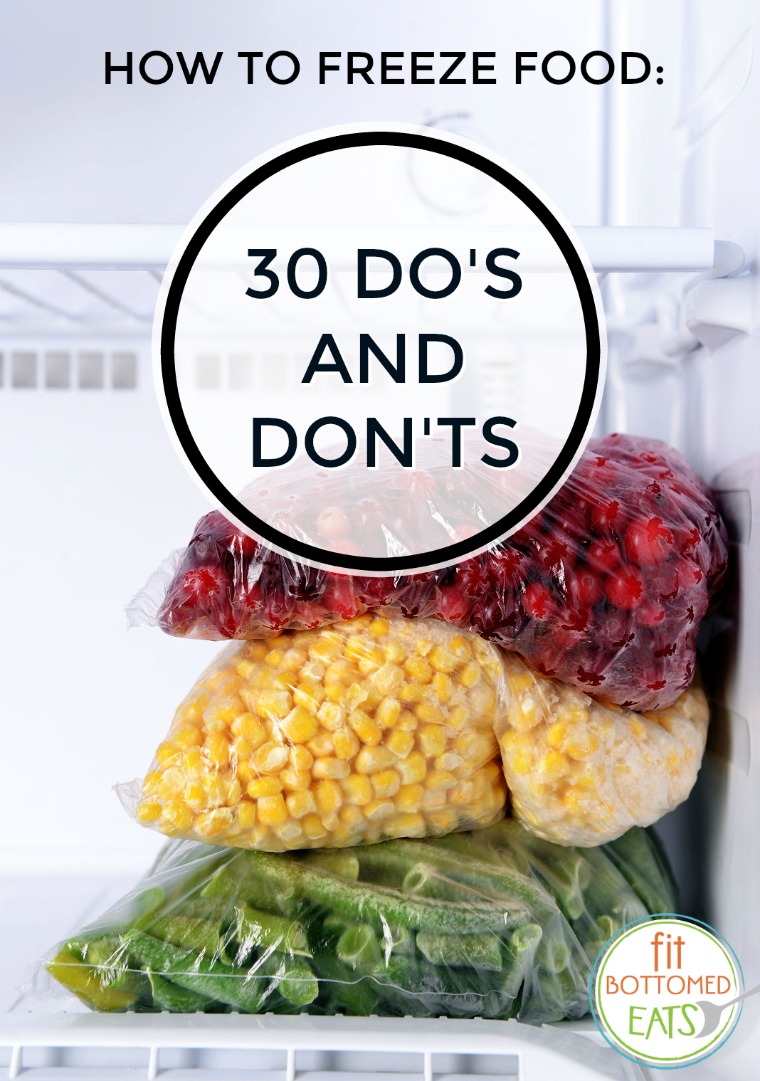How to Freeze Food: 30 Do’s and Don’ts
Following a vegan diet can seem intimidating to a lot of people, but with a little knowledge and a bit of planning, it can be just as simple as following any other healthy eating plan. Today’s guest post is from Ginny McMeans, who probably knows more about making vegan dining simple than anyone else around. Her cookbook, The Make Ahead Vegan Cookbook, not only contains 125 freezer-friendly vegan recipes, but also offers really smart tips and tricks for what to freeze and how to do it right — and she’s sharing some of those tips with us today!

Freezing some of your meals is a very rewarding accomplishment and very liberating. It feels so good when a recipe is completed and there is enough food for not just one meal but also enough to freeze for another night.
When you freeze snacks and meals, you not only are able to cook on your own schedule but you save time and energy. It takes almost the same amount of time to prepare two casseroles or sides as it does one. That saves you about 50 percent of your time.
Here are a few tips that will help put you in the category of being a freezing wizard.
How to Freeze Food … the Right Way
Do’s
- Do use containers such as bags, jars and containers that are specifically marked for freezing food.
- Do push the air out of your plastic baggies so that your chances of getting freezer burn are cut to a minimum.
- Do double your sweet muffin recipes. Bake them and have a batch now and freeze one for later.
- Do follow freezer storage time limits for each type of food, such as bakery goods and casseroles. Freezing beyond those times the food will be at a much lower quality.
- Do flash freeze items that will aid in easier packaging such as bean burgers, berries and raw sweets that have been rolled into balls.
- Do freeze waffles. They are wonderful for a quick breakfast at the table. Pop in the toaster and there you go.
- Do make sure all items are clearly labeled. You will be amazed how you will forget what you’ve frozen. Many stews, soups and sauces look alike when frozen.
- Do store larger items in the back of the freezer and smaller items in front so things don’t get lost.
- Do leave some space in your freezer for air circulation, but remember: the fuller you can keep the freezer (while still leaving some space), the more efficient it will be.
- Do use quality products because that is the product you are going to get after it has been frozen. Bad food does not improve.
- Do freeze soups and stews. Remove them from the heat, then stir every once in a while to help them cool more quickly for freezing.
- Do pack for the size family that you have. You can pack two casseroles in the 8-inch-by-8-inch pan for a larger family and they will then fit in the narrower side loading freezers.
- Do individually wrap certain items, such as burritos and bean burgers, for easier removal for lunch .
- Do freeze your small leftovers, such as tomato paste, vegetable broth and red sauce, in ice cube trays. Often these little dabs can really add to a recipe.
- Do freeze leftover pasta without a sauce. Let it cool to room temperature and drop it in a container to freeze. When you want to use it, bring some water to a boil to cover. Drop in the pasta and heat through. It only takes about a minute and tastes fresh.
Don’ts
- Don’t freeze herbs fresh. Chop them up and place in an ice cube tray with your favorite oil or water before freezing.
- Don’t use cracked or warped lids for the freezer. They aren’t good any more and will not provide a good seal.
- Don’t freeze raw vegetables; they need to be blanched.
- Don’t freeze potatoes, cabbage, cucumber, eggplant, endive, fennel, leafy greens, lettuce, parsley, peppers, radishes, ripe tomatoes, summer squash, turnips, watermelons, zucchini. Their water content is too high.
- Don’t freeze food above 0 degrees Fahrenheit. That is the ideal temperature.
- Don’t overcook pasta for casseroles that will be baked in the oven later. Cook it al dente. The pasta will cook more when you are baking the final product.
- Don’t thaw your food on the counter; always do that in the refrigerator.
- Don’t freeze cooked food while it is still hot. Make sure it is room temperature before putting it in the freezer.
- Don’t fill your liquid containers too full. Leave a little space because liquid expands when frozen.
- Don’t throw all your used foil and bags away. If they have not touched food then just open to air dry on your counter.
- Don’t throw away leftover coffee. Freeze it in ice cube trays for iced coffee.
- Don’t guess when doubling measurements for freezer recipes. It is too easy to make a mistake so write it down.
- Don’t freeze food that has been frozen before.
- Don’t think you’ll remember what is in the freezer. If you can keep a running list taped on the inside of your kitchen cupboard it will make your life much easier.
- Don’t use foil with foods high in acid such as tart fruits or dishes made with vinegar and tomatoes. It causes a bad reaction.
Do you have favorite recipes that you love to double and freeze? —Ginny
